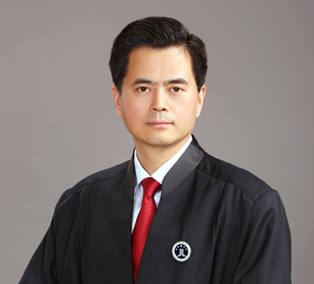Beichuan launches campaign to save ethnic Qiang´s cultural heritage
font-size:
As China's only ethnic Qiang Autonomous County, Beichuan is home to a large number of splendid and ancient cultural relics. But the devastating earthquake has inflicted serious damage to these cultural treasures. And now, protection of the Qiang people's cultural heritage has emerged as a challenging task in the reconstruction of the county.

A campaign to save ethnic Qiang's cultural heritage is unfolding at the ruins of the Beichuan Folk Culture Museum. The whole building collapsed in the earthquake and more than 800 pieces preserved there are buried under the rubble. More than 30,000 people of ethnic Qiang origin were killed in the devastating quake, including many folk artists.
Gao Zeyou, curator of Beichuan Folk Culture Museum, said "We Qiang people have a unique culture among China's 56 ethnic groups. We have no written language, so our cultural heritage relies on oral means to pass from one generation to the next. We boast many unique musical instruments like the Qiang flute and choor, both are wind instruments."
The most well-known Qiang instrument is perhaps the Qiang Flute. An ancient reed instrument, the flute is the best tool for Qiang musicians to convey messages of love and nostalgia. Many works featuring the Qiang flute easily arouse a sense of solitude and sadness. Poets far back in the Tang Dynasty left vivid descriptions of the instrument. Very few people know how to play the flute now, and some masters of this exquisite art form died in the earthquake.

Gao said "We are collecting damaged cultural relics from the rubble and trying our best to renovate and protect those tangible relics. For intangible cultural heritage, we have to register every still existing heirs and find disciples for them as soon as possible. Otherwise our culture will perish."
The curator himself lost five family members and relatives in the earthquake. But he's fully aware of the heavy responsibility on his shoulders. He says since he and his colleagues have survived, the time has come for them to reclaim from the disaster what they cherish so much and are so proud of.

| More than 30,000 people of ethnic Qiang origin were killed in the devastating quake, including many folk artists. |
A campaign to save ethnic Qiang's cultural heritage is unfolding at the ruins of the Beichuan Folk Culture Museum. The whole building collapsed in the earthquake and more than 800 pieces preserved there are buried under the rubble. More than 30,000 people of ethnic Qiang origin were killed in the devastating quake, including many folk artists.
Gao Zeyou, curator of Beichuan Folk Culture Museum, said "We Qiang people have a unique culture among China's 56 ethnic groups. We have no written language, so our cultural heritage relies on oral means to pass from one generation to the next. We boast many unique musical instruments like the Qiang flute and choor, both are wind instruments."
The most well-known Qiang instrument is perhaps the Qiang Flute. An ancient reed instrument, the flute is the best tool for Qiang musicians to convey messages of love and nostalgia. Many works featuring the Qiang flute easily arouse a sense of solitude and sadness. Poets far back in the Tang Dynasty left vivid descriptions of the instrument. Very few people know how to play the flute now, and some masters of this exquisite art form died in the earthquake.

| As China''s only ethnic Qiang Autonomous County, Beichuan is home to a large number of splendid and ancient cultural relics. |
Gao said "We are collecting damaged cultural relics from the rubble and trying our best to renovate and protect those tangible relics. For intangible cultural heritage, we have to register every still existing heirs and find disciples for them as soon as possible. Otherwise our culture will perish."
The curator himself lost five family members and relatives in the earthquake. But he's fully aware of the heavy responsibility on his shoulders. He says since he and his colleagues have survived, the time has come for them to reclaim from the disaster what they cherish so much and are so proud of.
-
Previous:
-
Next:
Related articles
This article has no related articles!






